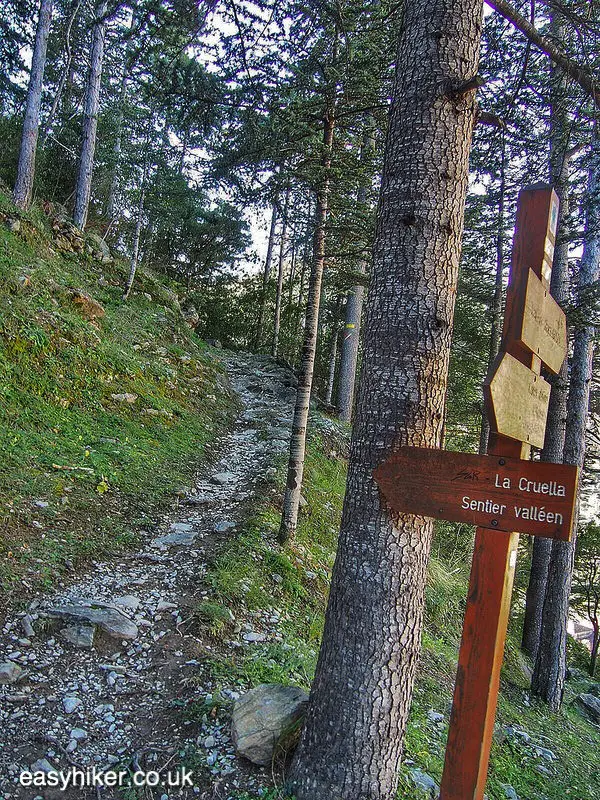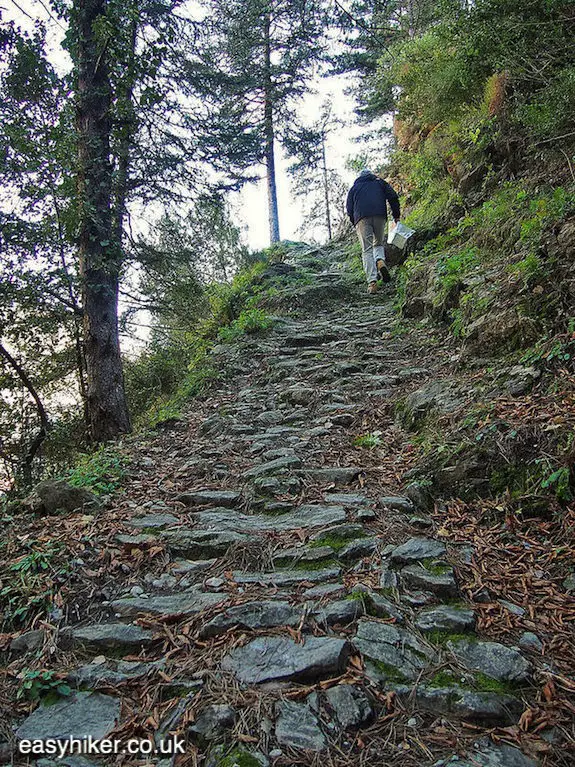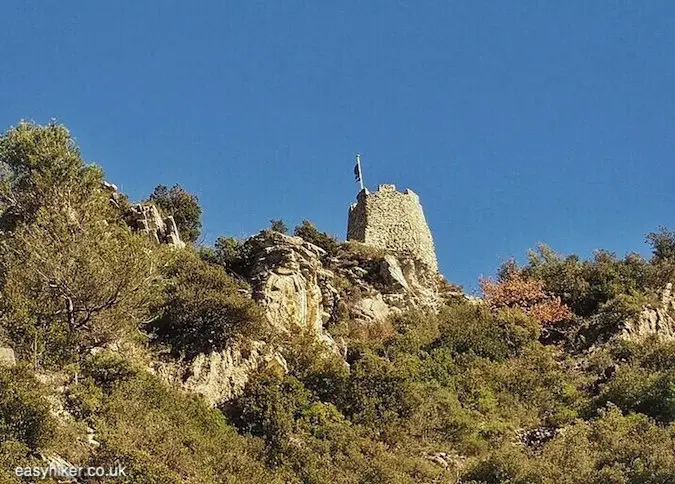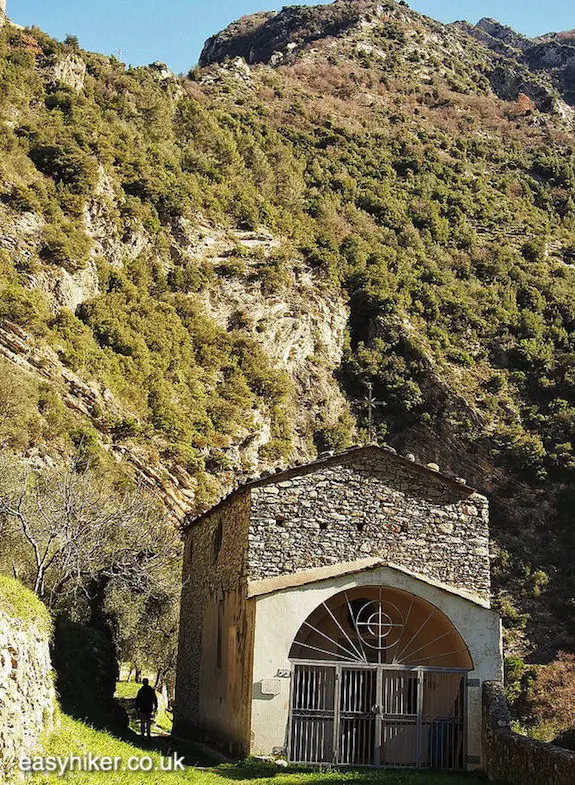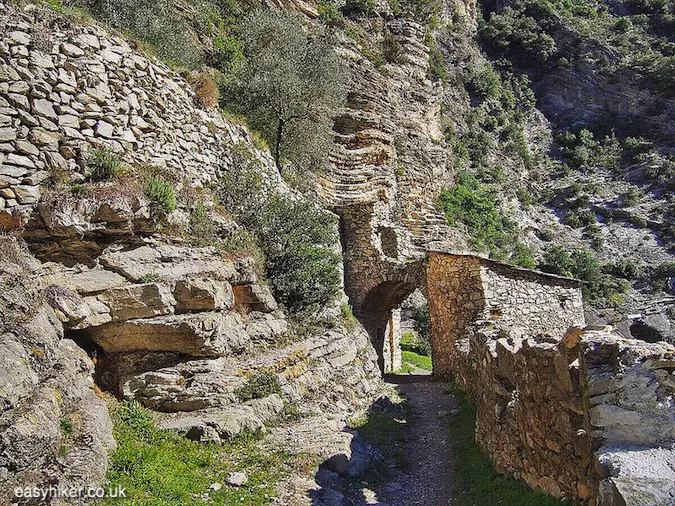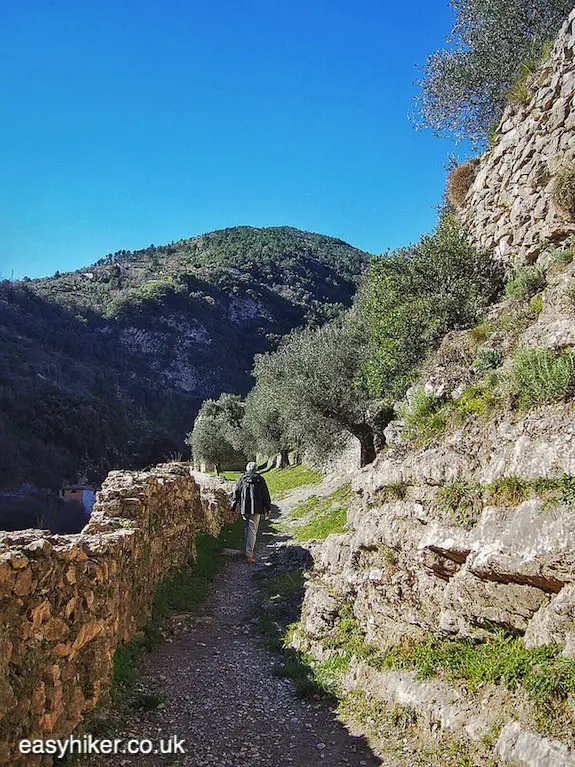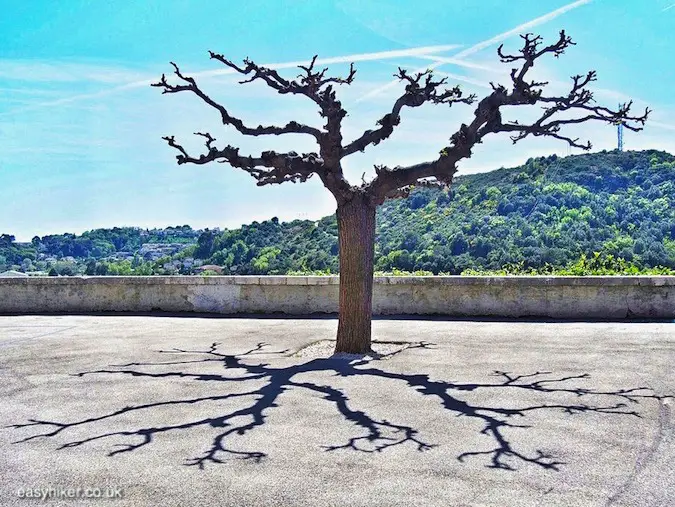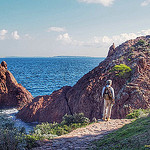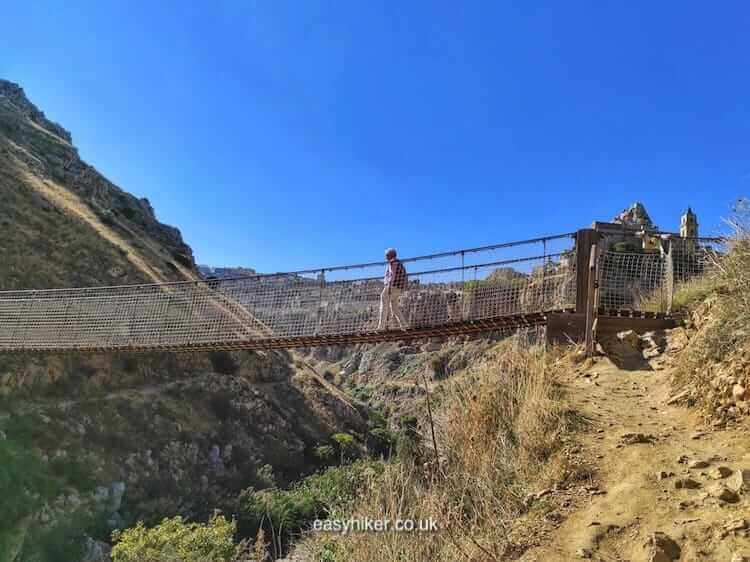Once they were giants – Breil and the Roya River. From the train, Breil-sur-Roya looks incongruously large and imposing, with its tree lined riverside avenue and two large churches in the centre of town.
Located in that part of the border country between France and Italy that is characterized by perched hilltop villages and their nervous huddles of buildings, Breil comes across not only as much bigger but also as much bolder, saying in effect “go on – attack me if you dare”.
And indeed, Breil was once an important town, bigger and busier in its heyday than anything you would have been able to find on the near-by coast.
But this heyday (the 17th century) is long gone, and nowadays, an entire quarter of Breil’s Old Town has been fenced-in, probably because it was in immediate danger of falling down (judging from the propped-up houses in its immediate vicinity), while down the un-fenced high street, roughly one in three or four shops has been boarded up or abandoned.
It was the salt trade that made Breil great. I bet the prosperous citizens of the 17th century did not see this coming and could not imagine a time when things would be anything but hunky-dory. People will always need salt, they would have said, so what is there to worry about? What indeed.
Places like that always give me the jitters because I cannot help wondering what will eventually ruin our own cities and what will kill off the trades from which they, and we, all live.
London, Paris, Rome: they will continue to plough on, as they have done for many hundreds of years, adapting their economies time and again. They are the foxes of this world.
But what about the hedgehogs: all those towns that know only one way of survival, only one trade, such as, say: manufacturing? Detroit is surely only the first of many that will bite the dust.
And what about all those cities that live on tourism? What will one day be the nemesis of this industry: WWIII, a global pandemic, a worldwide energy crisis – any suggestions? Just remember: people will always need salt.
But let us leave that question side to be discussed another day, because, lest we forget, we have business to do in Breil: easy hiking business.
Here’s a sporty hike on the Cruella Trail
Breil, after all, possibly as a result of its history as a key stopover on the ancient “salt route” of traders, lies at the hub of an entire network of hiking trails.
The tourism office (in the heart of the village, opposite the bus stop near the church) provides a brochure with about half a dozen circular hikes (with a mean length of approx. 3 hours).
For those who do not want to be constrained by loops and “boucles”, there is the near-by GR52 with possible one-day hikes to the neighbouring villages of Sospel and Saorge.
Easier options include the 3-hour hike along the “Trail of the Olives”, which takes you alongside many of the terraced olive orchards for which this area used to be famous …
… and the “Cruella Loop”, at 90 minutes the shortest of the brochure’s routes, but also the steepest. It is labeled “sportive” in the brochure, and that should serve as a warning – because when the French say that a trail poses a sporting challenge, they really mean it.
The sporty hike on this trail goes pretty much straight up, at least for the first hour during which you will curse yourself for not reacting to the hint in the name of the trail.
But then, at the top of the hill, you will find the Cruella Tower (and the flaw in your plausible-but-wrong etymology) – which was given its name, by the way, because of the spectacle that the birds of prey provided when they were nesting in the tower walls.
But, of course, there is also a lazy option (instead of this sporty hike): use the Rue de Place Rousse to walk a little out of town, and you will soon arrive at the Saint Anthony Chapel …
… and the old town gate, the Portes de Genes.
From here, you can walk a little further up – this is the also the return leg of the Cruella Loop – and enjoy some great views over the Roya River, which is a totally different animal here, in the wilderness, than it is less than one kilometer away in Breil where it has been sedated by a hydro-electric power station.
For the easiest way to get to Breil for this sporty hike, take the 905 bus from Menton (central coach station or down by the seaside). But be aware that the 905 circulates only 3 to 4 times a day
If you want to do more than a short stroll, you must take the first bus out at 8:00 – the next one will leave at around mid-day which gives you very little time considering the last bus leaves Breil at around 4:30. (The trip takes about 45 minutes one way.) A little tip: sit on the right side of the bus, so you see can more of the wild Roya during the journey.
Breil is also a stop on the Train de Merveilles from Nice to Tende, but if you want to travel by rail, rather take the train from Ventimiglia (in the direction of Cuneo) which is the shorter journey. Departures on either line, at any rate, are fairly infrequent, so you have to see what works best for you.



